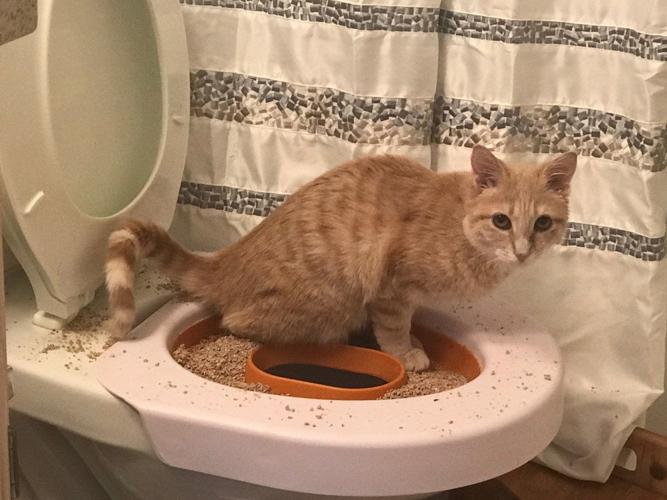The Risks of Flushing Cat Poop in Your Toilet - Precautionary Measures
The Risks of Flushing Cat Poop in Your Toilet - Precautionary Measures
Blog Article
What are your beliefs about How to Dispose of Cat Poop and Litter Without Plastic Bags?

Introduction
As feline owners, it's vital to be mindful of how we take care of our feline pals' waste. While it might appear convenient to purge feline poop down the toilet, this practice can have damaging effects for both the setting and human health and wellness.
Alternatives to Flushing
Luckily, there are safer and a lot more responsible methods to dispose of feline poop. Think about the adhering to alternatives:
1. Scoop and Dispose in Trash
The most usual method of getting rid of cat poop is to scoop it right into a naturally degradable bag and throw it in the trash. Make sure to utilize a dedicated litter scoop and take care of the waste without delay.
2. Use Biodegradable Litter
Go with naturally degradable feline trash made from materials such as corn or wheat. These clutters are eco-friendly and can be safely gotten rid of in the trash.
3. Hide in the Yard
If you have a backyard, take into consideration hiding feline waste in a marked location away from vegetable yards and water sources. Be sure to dig deep sufficient to avoid contamination of groundwater.
4. Mount a Pet Waste Disposal System
Buy a pet waste disposal system particularly created for cat waste. These systems make use of enzymes to break down the waste, decreasing odor and ecological impact.
Wellness Risks
Along with ecological issues, purging feline waste can also present health and wellness dangers to human beings. Pet cat feces may consist of Toxoplasma gondii, a bloodsucker that can trigger toxoplasmosis-- a possibly severe health problem, particularly for expectant women and people with weakened body immune systems.
Ecological Impact
Flushing cat poop introduces hazardous pathogens and parasites into the water, posing a substantial danger to water ecosystems. These impurities can adversely impact aquatic life and compromise water top quality.
Verdict
Liable pet dog possession expands beyond giving food and shelter-- it likewise includes proper waste administration. By refraining from flushing cat poop down the commode and opting for alternative disposal techniques, we can decrease our environmental impact and secure human wellness.
Why Can’t I Flush Cat Poop?
It Spreads a Parasite
Cats are frequently infected with a parasite called toxoplasma gondii. The parasite causes an infection called toxoplasmosis. It is usually harmless to cats. The parasite only uses cat poop as a host for its eggs. Otherwise, the cat’s immune system usually keeps the infection at low enough levels to maintain its own health. But it does not stop the develop of eggs. These eggs are tiny and surprisingly tough. They may survive for a year before they begin to grow. But that’s the problem.
Our wastewater system is not designed to deal with toxoplasmosis eggs. Instead, most eggs will flush from your toilet into sewers and wastewater management plants. After the sewage is treated for many other harmful things in it, it is typically released into local rivers, lakes, or oceans. Here, the toxoplasmosis eggs can find new hosts, including starfish, crabs, otters, and many other wildlife. For many, this is a significant risk to their health. Toxoplasmosis can also end up infecting water sources that are important for agriculture, which means our deer, pigs, and sheep can get infected too.
Is There Risk to Humans?
There can be a risk to human life from flushing cat poop down the toilet. If you do so, the parasites from your cat’s poop can end up in shellfish, game animals, or livestock. If this meat is then served raw or undercooked, the people who eat it can get sick.
In fact, according to the CDC, 40 million people in the United States are infected with toxoplasma gondii. They get it from exposure to infected seafood, or from some kind of cat poop contamination, like drinking from a stream that is contaminated or touching anything that has come into contact with cat poop. That includes just cleaning a cat litter box.
Most people who get infected with these parasites will not develop any symptoms. However, for pregnant women or for those with compromised immune systems, the parasite can cause severe health problems.
How to Handle Cat Poop
The best way to handle cat poop is actually to clean the box more often. The eggs that the parasite sheds will not become active until one to five days after the cat poops. That means that if you clean daily, you’re much less likely to come into direct contact with infectious eggs.
That said, always dispose of cat poop in the garbage and not down the toilet. Wash your hands before and after you clean the litter box, and bring the bag of poop right outside to your garbage bins.
https://trenchlesssolutionsusa.com/why-cant-i-flush-cat-poop/

I was shown that editorial on How to Dispose of Cat Poop and Litter Without Plastic Bags through an associate on another web page. Don't hesitate to take the opportunity to promote this write-up if you enjoyed it. I praise you for your time. Come back soon.
Information Report this page